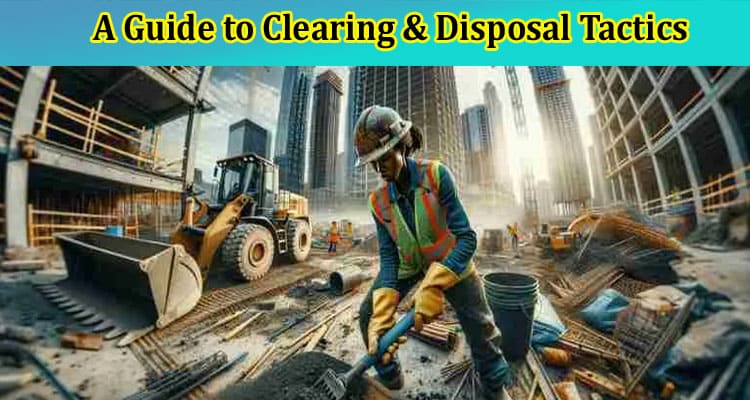As projects grow in complexity, managing them effectively becomes a challenge. This is the point at which project management tools become relevant. They streamline communication, track progress, and ensure alignment with project goals.
This comprehensive guide will take you through the ins and outs of microsoft ppm, transforming you into a proficient user ready to tackle projects.
What is Microsoft PPM?
Microsoft PPM is a cloud-based platform that helps organizations manage their projects, portfolios, and resources. Engineered to optimize and simplify project management workflows, it seamlessly integrates with Microsoft’s ecosystem.
This system furnishes a unified perspective of all ongoing projects, facilitating progress tracking, risk assessment, and well-informed choices. Leveraging its user-friendly interface and features, Microsoft PPM enables project managers to strategize, execute, and oversee projects with accuracy and effectiveness.
Features of Microsoft PPM
Microsoft PPM includes various features to help you successfully plan, execute, and deliver projects, and these include:
1. Project Planning
Project Planning within Microsoft PPM empowers users to create comprehensive project roadmaps. This feature facilitates the breakdown of projects into manageable tasks, establishing task dependencies and timelines. Through interactive Gantt charts, users visualize the project’s progression, helping to pinpoint potential bottlenecks and adapt plans accordingly.
Efficient project planning enhances team coordination, sets realistic milestones, and ensures optimal resource allocation. This user-friendly feature makes it accessible for both novices and experienced project managers.
2. Project Execution
This capability enables teams to allocate resources, assign tasks, and initiate project workflows. Through real-time collaboration tools, team members can communicate, share documents, and collectively drive project progress.
Microsoft PPM’s centralized platform ensures that everyone is aligned and informed, while its dynamic monitoring features facilitate tracking task status and identifying potential roadblocks. This feature fosters a proactive approach to project management, enabling teams to make on-the-fly adjustments and maintain project momentum.
3. Project Reporting
This feature allows for comprehensive reports showcasing key metrics, milestones, and potential risks. By presenting data in a visual and accessible format, teams and stakeholders can make informed decisions and ensure alignment with project objectives.
Microsoft PPM’s reporting functionality facilitates transparency, enhances accountability, and contributes to timely project delivery. With customizable reporting templates, users can tailor presentations to suit various audiences, making project communication more impactful and fostering a data-driven approach to project management.
4. Resource Management
Resource management enables organizations to optimize resource allocation and utilization across projects. This capability empowers project managers to effectively assign team members, equipment, and assets based on availability and skill sets. Conflicts and overloads can be mitigated with a centralized view of resource availability, ensuring balanced work distribution and preventing burnout.
It also facilitates efficient collaboration and maximizes productivity, ultimately contributing to project success.
5. Portfolio Management
This feature enables project managers and stakeholders to assess project portfolios, considering factors like budget, resources, and strategic goals. It offers a comprehensive view of all projects, aiding decision-making by identifying high-priority initiatives and potential risks.
By evaluating project portfolios holistically, organizations can optimize resource allocation, maximize ROI, and ensure alignment with overarching business objectives. This feature enhances agility and facilitates proactive adjustments, leading to a more streamlined and effective project management that drives sustainable growth and success.
How to Use Microsoft PPM
Using Microsoft PPM effectively involves a systematic approach that maximizes its potential. Here’s a step-by-step guide to get you started:
1. Define Your Project
Start by clearly defining your project’s scope, objectives, and deliverables. Use the project initiation templates in Microsoft PPM to set the groundwork.
2. Plan Your Project
Break down your project into tasks and subtasks. Set task dependencies and durations to create a realistic project schedule. Assign resources to tasks based on availability and skills.
3. Collaborate and Execute
Leverage the collaborative features of Microsoft PPM to assign tasks to team members, share documents, and hold discussions. Use the Gantt chart to visualize the project timeline and track progress.
4. Monitor and Adjust
Regularly monitor the project’s progress using the reporting and analytics tools. Identify any deviations from the original plan and make necessary adjustments. Use the insights to communicate effectively with stakeholders.
5. Review and Learn
Once the project is complete, conduct a comprehensive review. Evaluate what worked well and what needs improvement. This feedback loop enhances your project management skills for future endeavors.
Pros and Cons of Using Microsoft PPM
While Microsoft PPM comes with a range of benefits, weighing these advantages against potential drawbacks is essential to determine whether it’s the right fit for your organization.
Pros
- Centralized Platform: Microsoft PPM provides a centralized platform for all project-related information, fostering collaboration and ensuring everyone is on the same page.
- Real-Time Monitoring: The platform enables real-time progress tracking, helping project managers identify bottlenecks and take timely corrective actions.
- Customizable Reporting: The reporting tools offer customizable templates to generate insightful reports, aiding decision-making and project communication.
- Integration with Microsoft Ecosystem: Being part of the Microsoft suite, PPM seamlessly integrates with other Microsoft applications like Excel, SharePoint, and Teams, enhancing efficiency and collaboration.
Cons
- Complex Configurations: Configuring Microsoft PPM to match your organization’s needs might require technical expertise.
- Scalability Challenges: For large organizations with numerous projects, the scalability of Microsoft PPM might pose challenges regarding data management and performance.
- Cost: Microsoft PPM is part of the Microsoft Project licensing suite, which can come at a cost, particularly for organizations on tight budgets.
- Dependency on Microsoft Ecosystem: While integration with Microsoft applications is a pro, it could be a con if your organization primarily uses non-Microsoft tools.
- Limited Customization: While customizable, Microsoft PPM might have limitations regarding specific workflows and customization options for certain industries or specialized projects.
Efficient Project Management with Microsoft PPM
Mastering project management becomes a reality with the use of Microsoft PPM. By understanding its features and following the step-by-step guide on its usage, you’re well-equipped to navigate the complexities of project management and steer your projects toward success.








